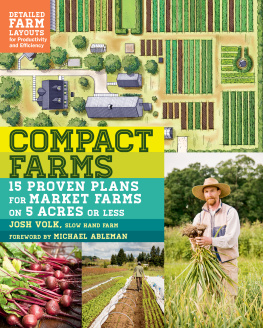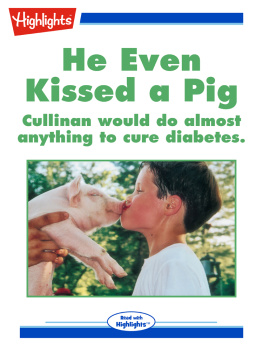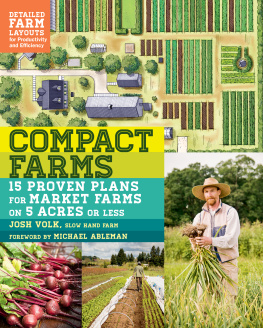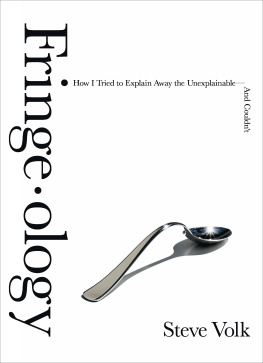Josh Volk - Compact Farms
Here you can read online Josh Volk - Compact Farms full text of the book (entire story) in english for free. Download pdf and epub, get meaning, cover and reviews about this ebook. year: 2016, publisher: Storey Publishing, LLC, genre: Home and family. Description of the work, (preface) as well as reviews are available. Best literature library LitArk.com created for fans of good reading and offers a wide selection of genres:
Romance novel
Science fiction
Adventure
Detective
Science
History
Home and family
Prose
Art
Politics
Computer
Non-fiction
Religion
Business
Children
Humor
Choose a favorite category and find really read worthwhile books. Enjoy immersion in the world of imagination, feel the emotions of the characters or learn something new for yourself, make an fascinating discovery.
- Book:Compact Farms
- Author:
- Publisher:Storey Publishing, LLC
- Genre:
- Year:2016
- Rating:4 / 5
- Favourites:Add to favourites
- Your mark:
- 80
- 1
- 2
- 3
- 4
- 5
Compact Farms: summary, description and annotation
We offer to read an annotation, description, summary or preface (depends on what the author of the book "Compact Farms" wrote himself). If you haven't found the necessary information about the book — write in the comments, we will try to find it.
Josh Volk: author's other books
Who wrote Compact Farms? Find out the surname, the name of the author of the book and a list of all author's works by series.
Compact Farms — read online for free the complete book (whole text) full work
Below is the text of the book, divided by pages. System saving the place of the last page read, allows you to conveniently read the book "Compact Farms" online for free, without having to search again every time where you left off. Put a bookmark, and you can go to the page where you finished reading at any time.
Font size:
Interval:
Bookmark:
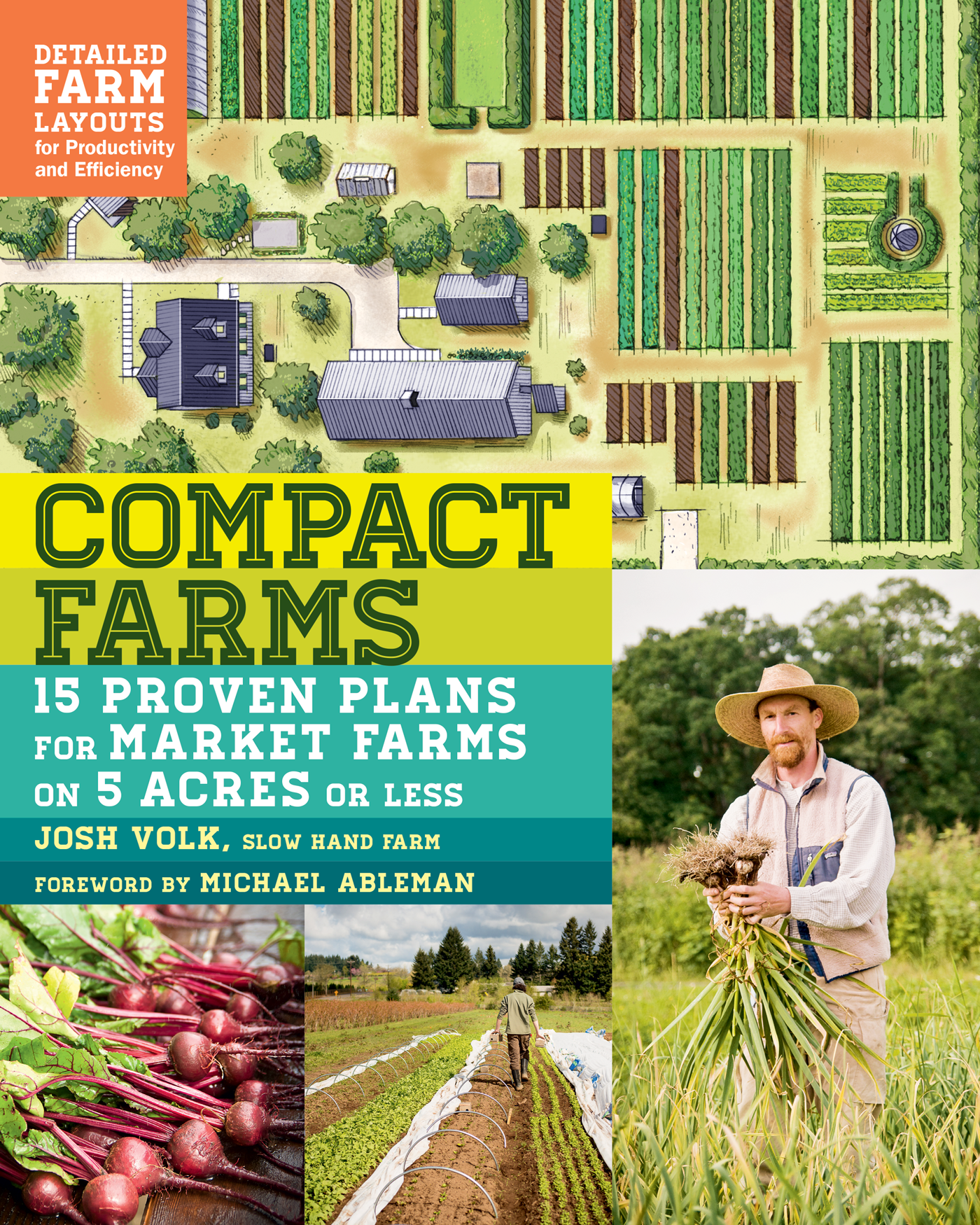

For those who dream of farming small

Im not sure Ive admitted this to anyone before, certainly not in a public forum, but there was a time when I suffered secretly from farm size envy. Throughout the 1980s and 1990s I managed a 12.5-acre farm that floated in a sea of tract homes and shopping centers in Southern California. It was referred to as the little farm that could, for at its peak it employed thirty people, fed hundreds of families, and produced an extraordinary diversity of fruits and vegetables. My small farm inferiority was fueled by the cultural perception at that time that 12.5 acres was too small to be viable and that any success we were experiencing was an anomaly.
This was just after then US secretary of agriculture Earl Butz proclaimed that farmers should get big or get out, and long before the local, farm-to-table, farmers market, foodie, arugula, French-breakfast-radish craze had found its footing. In spite of all this, that little farm gained a reputation around the country, trained a number of new farmers, and even managed to generate some serious dough. None of that assuaged my sense of relative inferiority. I grew up in the 1950s and 60s and bigger is better had lodged itself in the deep reaches of my psyche.
And so after more than twenty years on that farm, I moved 1,200 miles north to start over again, this time on 120 acres, ten times the size of that little farm in California.
And while I value being on land big enough to grow grain, plan longer-term crop rotations, and raise animals larger than a chicken or a rabbit, I now commute to the city a couple of days a week to run a small urban agriculture project as well. This farm, a whopping 5 acres of food production on pavement, now employs 25 people (most of whom are managing some form of addiction or mental illness) and produces more than 25 tons of fresh food per year, thus providing meaningful work and food for dozens of marginalized folks.
Small is not just beautiful, I have learned through this work, but it can also be economical, highly nutritional, and extremely powerful.
We all hear the constant harangue about what is wrong with the industrial food system: the chemicals, the genetic manipulations, the loss of topsoil, the pollution of groundwater. These are all critical issues that we need to consider, but I suspect that the real crisis is not a food crisis but a crisis of participation. When less than 2 percent of the population is producing the fundamental nourishment for the rest, it requires chemical and industrial methods that are depleting the soil, polluting the water, and making us sick.
Small farms have the unique ability to engage more people in the process. More eyes and hands per acre allow us to be more present and attend to the myriad of biological, ecological, and social details that are so easily missed as scale increases. Gardens and small farms are the incubators for so many good ideas and techniques that can then be adopted and adapted for any size farm. And well-run small farms are often far more productive per acre than their larger counterparts.
We need the fertile, productive, physical examples of these well-run small farms. We need to see these models and witness how they integrate with their local communities.
Mid- and large-scale farms fulfill an essential role in the broader food system. But to secure our food future we must also rethink what we see in our minds eye when we think farm, and we must question the culturally embedded idea that bigger is better. We need to embrace the idea that there is real power in the small, the intensive, the scale that a neighborhood or community can relate to and adopt as its own.
This book will take you on an intimate journey to visit some of the best models of little farms that could, clearly demonstrating the skill, ingenuity, resourcefulness, creativity, and attention to quality and detail that naturally evolve when hands and eyes and hearts are laser focused and fully present.
Michael Ableman
Farmer and author of Street Farm: Growing Food, Jobs, and Hope on the Urban Frontier
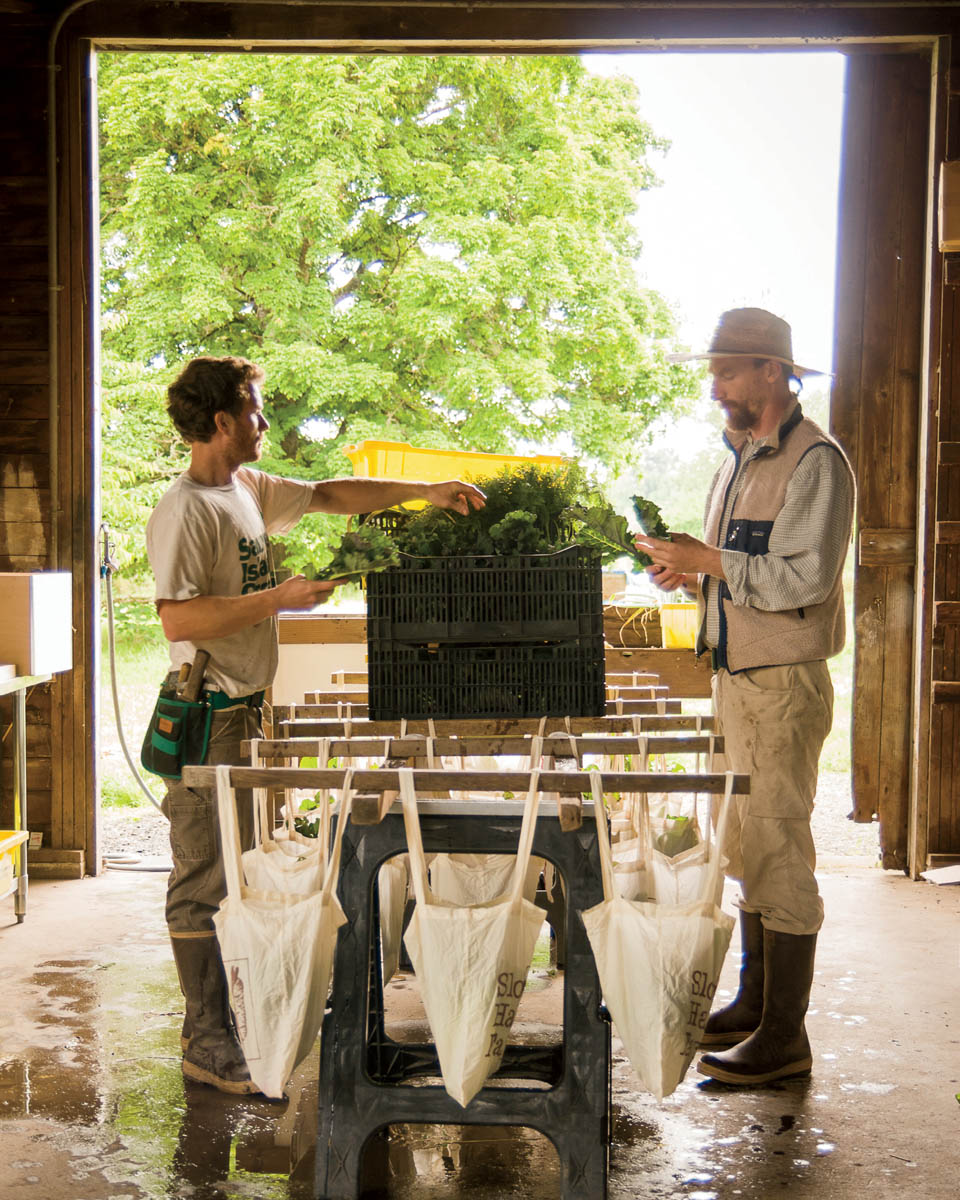
Kji and Josh packing CSA shares at Slow Hand Farm
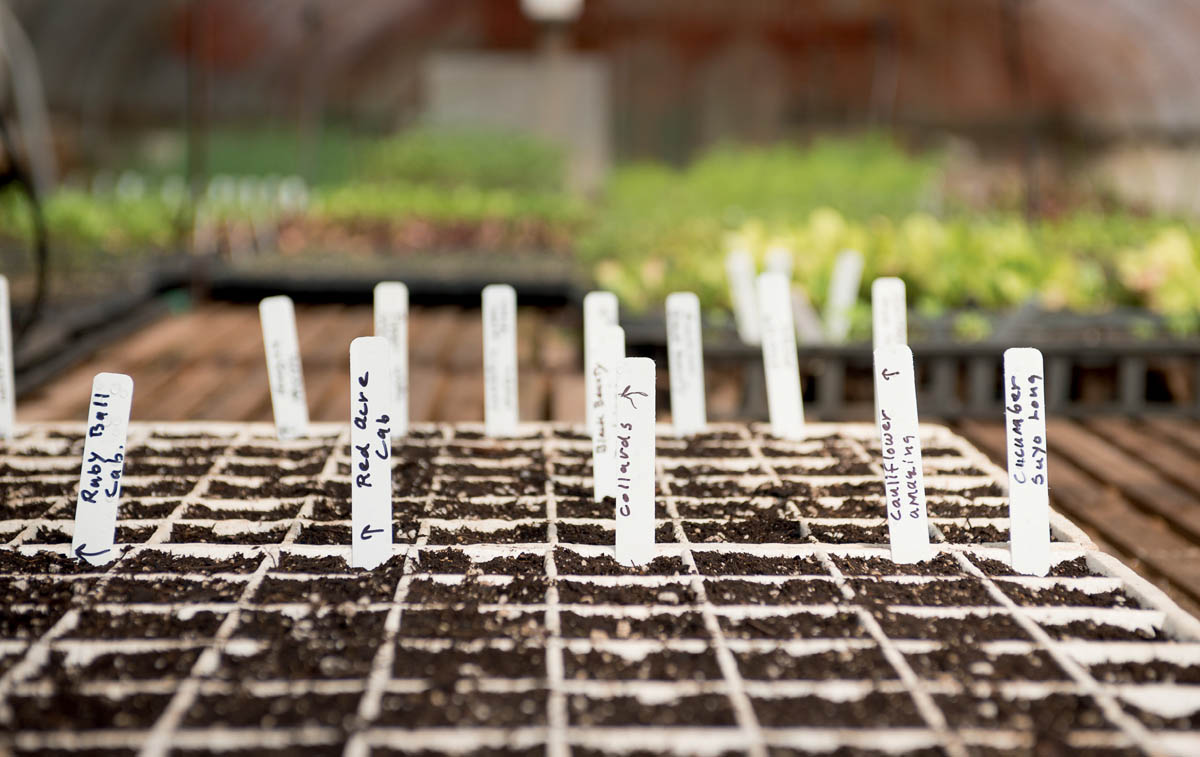
Small is beautiful.
Leopold Kohr
This book is about very small farms. How small is very small? My own farm, which I profile in this book, produced vegetables and herbs on less than a quarter acre. John Jeavons an early influence, whose ideas I reference throughout this book always spoke of 4,000 square feet (less than one-tenth acre) as the minimum amount of land needed to support a family. He suggests that for someone working by hand, anything larger than 10,000 square feet (slightly less than a quarter acre) is too much to handle alone.
Compact is an alternative word to describe these farms. Their farmers choose to keep their production spaces modest, intensively working limited areas, as opposed to spreading out their efforts over vast acreages.
When setting out to find farms to feature in this book, I went a little larger than Jeavonss ideal. I sought all kinds of successful farms with less than 5 acres of production and found not just a new wave of urban farmers, but also an old guard of seasoned veterans carrying on long traditions. Some work their land primarily by hand, but many use tractors of one size or another, and one even uses horse power (although the horse pasture takes up as much space as the production area!). All of the farms have more than one person working on the farm during the main season, although sometimes that means only two.
The point is that it doesnt take a large space to be productive or to make a decent, sustainable living. Across the country, from urban rooftops to rural holdings, farmers are proving there is more than one way to farm successfully on a small scale, and it can be done just about anywhere with decent soil, water, and people.
I didnt come from a farming background. I grew up on the edges of cities. My parents had vegetable gardens that I mostly ignored. When I went away to college and started cooking for myself, I became more interested in where my food came from and how to grow it. That interest grew, inspired by books on small-scale food production. There werent many writers on that topic then, and it wasnt so long ago.
This book is for those who dream of farming small. I hope it is both inspirational and practical, with useful foundational materials and ideas to help you plan your own compact farm. The 15 farm profiles offer a range of possibilities; the planning section provides a framework for getting started, as well as strategies to consider; the financial section outlines the earning potential; and the appendixes deliver additional resources for learning the nuts and bolts of farming.
The best part of writing this book was the opportunity to experience so many wonderful compact farms. I found many more than I had time to write about, and I know I saw just the tip of the iceberg. I am extremely grateful to the farmers who generously took the time to talk me through the details of their operations. I hope I have captured the essence of their approaches in the few short pages devoted to each farm. I could easily write an entire book about any one of them, and I would love to spend a season or two apprenticing with each and every one to learn more.
Font size:
Interval:
Bookmark:
Similar books «Compact Farms»
Look at similar books to Compact Farms. We have selected literature similar in name and meaning in the hope of providing readers with more options to find new, interesting, not yet read works.
Discussion, reviews of the book Compact Farms and just readers' own opinions. Leave your comments, write what you think about the work, its meaning or the main characters. Specify what exactly you liked and what you didn't like, and why you think so.

